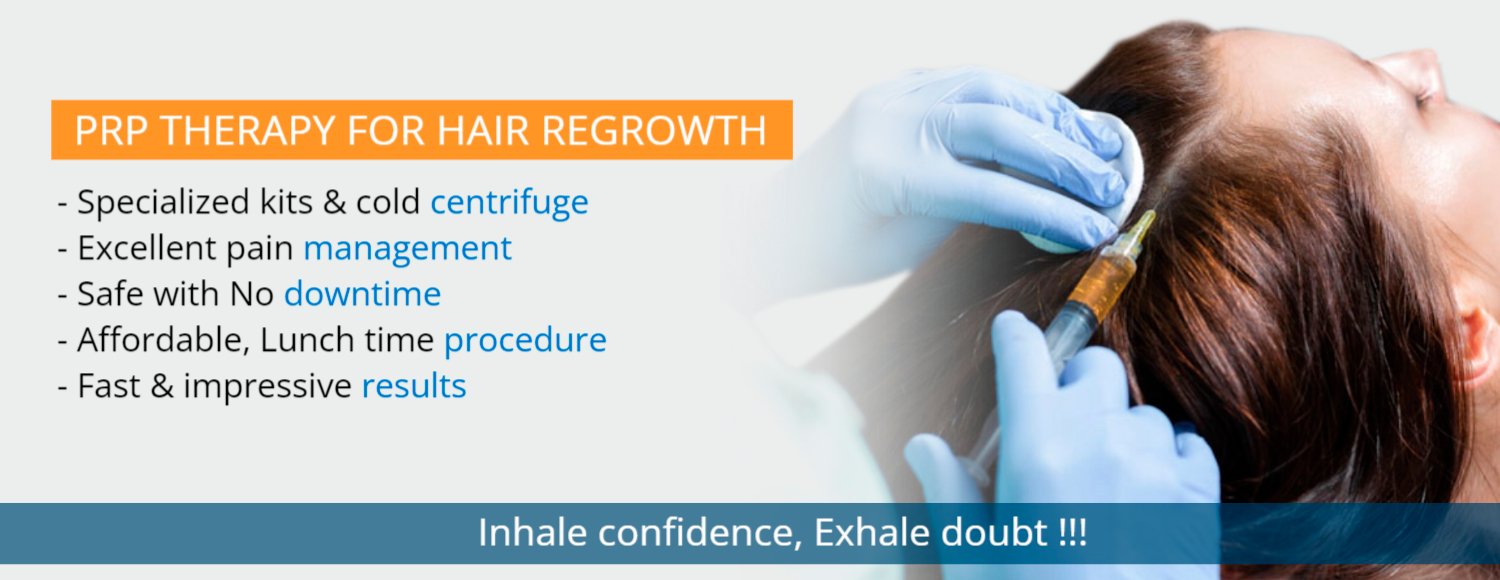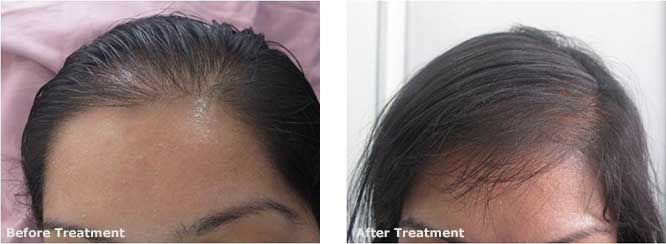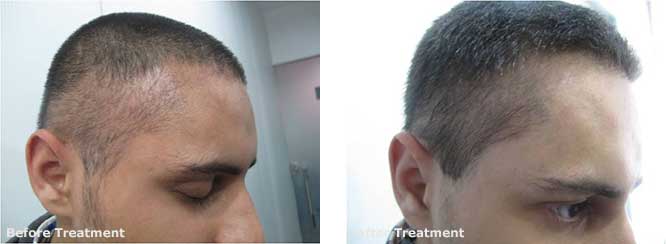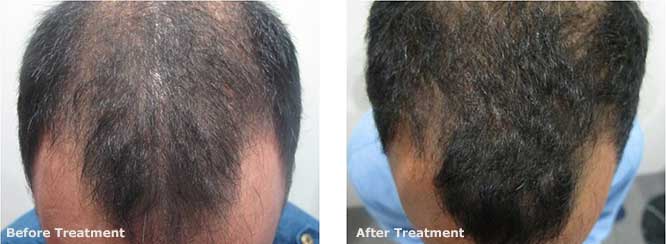
What is PRP Therapy?

PRP (Platelet Rich Plasma) therapy is new and exciting, non-surgical concept of regenerative medicine to stimulate hair growth in a natural way. PRP for hair loss is a simple, 3-step medical treatment in which a person’s blood is drawn from his vein, processed and then injected into the scalp.
It is also referred to as ‘Vampire’ or ‘Dracula’ therapy; as it involves re-injection of one’s own blood into one’s own body part to be treated (but after processing).
What is PRP hair treatment?
The primary purpose of using PRP in hair restoration is to stimulate inactive or newly implanted hair follicles into an active growth phase as PRP contains many growth factors essential for hair growth such as Platelet-Derived Growth Factor (PDGF) and Vascular Endothelial Growth Factor (VEGF).
PRP therapy for hair treatment is getting huge popularity in India and world over as it’s a very simple 30-minutes procedure which delivers quick and promising results; and without any considerable side-effects.
It works best
- in patients with diffuse thinning who tend to lose hair all over their scalp and
- in persons with miniaturized hair where hair become very thin and weak and start falling even on gentle rubbing/combing.
PRP triggers hair growth by increasing blood supply to the hair shaft and in turn increasing the length and thickness of hair shaft along with causing new hair growth.
However, the patients who have permanent baldness over their head (where hair roots are completely damaged), require hair transplant as PRP therapy alone can’t bring the desired results in such patients. But in these cases also, PRP therapy has a definite role when used in combination with hair transplant (pre-operatively, intra-operatively, or post-operatively). As it not only helps in healthier and faster growth of transplanted hair, but also provides nutrition and stimulates the growth of existing thinning hair at the same time, thus improving the overall results of hair transplant.
Aura Skin Institute took the plunge and was the first to introduce this revolutionary and innovative, non-surgical hair restoration therapy for the first time in this part of the county. Initially the benefits of PRP therapy were considered ‘only theoretical’, but now there is enough research and evidence to believe that PRP does work for hair loss and is a safe and effective way of reversing hair loss and stimulating new hair growth. And that’s why it is gaining immense popularity worldwide and more and more people are opting for this wonderful treatment.
In a study from our own institute on more than 100 patients, we found that PRP worked like an elixir for hair regrowth of new as well as dormant hair follicles.
Click here to read our full paper on PRP therapy.
How does PRP work?
In published medical literature from Europe and the United States, PRP therapy has been used extensively in sports injuries and other surgical specialties for the last two decades with positive outcomes and success. In the field of hair restoration, existing evidence demonstrates PRP therapy as a promising treatment option to promote hair growth.
PRP contains millions of growth factors essential for hair growth (like Platelet-Derived Growth Factor-PDGF, Vascular Endothelial Growth Factor-VEGF and Stem Cell Factor-STF etc.) that stimulates the stem cells located in the hair bulge as well as other structures of the hair follicles and thus acts as manure for hair growth. The primary purpose of using PRP in hair restoration is to stimulate inactive or dormant hair follicles and take them into an active growth phase. It also helps in faster growth of newly implanted hair follicles. So what you get after this therapy is ‘Better and Faster’ growth rate of your hair.
Procedure
It is a very simple, half-an-hour lunch-time procedure and you can join your work immediately after the treatment.
- First blood is drawn from your vein like you give blood for any other blood test.
- Then this blood is processed and centrifuged and PRP is separated from the rest of the blood.
- Finally under topical anaesthesia, PRP is injected into the scalp using dermaroller or microneedling.
A word of Caution about PRP preparation: Studies have shown that for stimulation of hair regrowth, the prepared PRP needs to have a much higher concentration of platelets than required in PRP therapy used for other indications like tendon and ligament injuries. So the results of PRP for hair are directly proportional to the technique and equipment used for preparation of PRP.
Here at Aura Skin Institute, your blood platelets are collected at the highest concentration as
- We use special and standardised cooling centrifuge (designed specifically for enhanced platelet viability & function) and
- US FDA approved PRP kits
PRP therapy can be repeated every 4-6 weeks and usually 3-4 sittings are sufficient, though some patients may require maintenance therapy once a year or more frequently depending upon the severity of hair loss.
Who can take PRP Therapy?
Any person who is having hairfall or noticing hairloss can take PRP therapy. It can be used alone or in combination with hair transplant surgery as explained below:
- Temporary Hair Loss: It can happen after taking some medicines, exposure to chemicals, hormonal and nutritional factors, thyroid disease, pregnancy, after radiation and chemotherapy. Stress is another big factor in today’s competitive world. Hair Styling, excessive use of cosmetic products and infections of the scalp can also cause hair loss. This group of patients are best suited for PRP therapy and this type of hair loss can be completely reversed. Along with PRP therapy, underlying cause is also needs to be addressed simultaneously.
- Female pattern hair loss: PRP is also very useful in Female pattern hair loss as women tend to lose their hair all over the scalp, so PRP therapy is an effective alternative to hair transplant surgery and adjunct to medication in women.
Male-pattern baldness (Androgenetic alopecia)
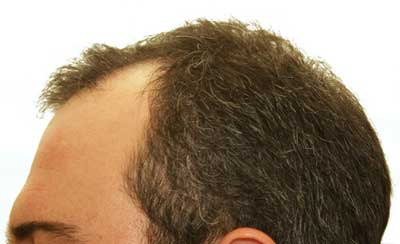
Though much more common in men, it can be seen both in males and females. It is due to the sensitivity of hair to male sex hormone ‘testosterone’ and is very common in those who genetically inherit this trait. In these individuals, testosterone destroys the cells responsible for the growth of hair roots. These hair first get thinner and weak, then stops getting longer, finally die and fall down. These patients don’t respond to PRP therapy alone and are candidates for hair transplant. Though PRP can help in strengthening and preserving the existing hair but one might need regular maintenance sessions of PRP therapy in such cases. PRP therapy acts as a useful adjunct when combined with hair transplant surgery and can be used pre-operatively, intra-operatively, or post-operatively. It not only helps in healthier and faster growth of transplanted hair, but also stimulates the existing thinning hair at the same time.
ARE THERE ANY COMPLICATIONS OF PRP THERAPY?
PRP therapy is a safe and natural procedure and there are no serious complications. There are no chances of any rejection or hypersensitivity as it uses one’s own blood cells. But one must ensure that PRP therapy is taken from an expert doctor only and not from any untrained or unqualified person as it deals with blood products.
There can be mild redness, bruising over the scalp or one can get a mild headache or heaviness which usually settles automatically. However mild routine analgesics can be given for a day if it is problematic. One should avoid touching the scalp and taking head-bath for 12 hours after the procedure.
Cost of PRP Therapy for Hair Loss in India
The cost of PRP therapy for haIr typically consists of 3-4 treatment sessions spaced 4-6 weeks apart; while some patients might require annual maintenance session if hair loss severity is high.
The cost of PRP therapy for hair in India is highly variable and typically ranges from INR 15000/- to 35000/- for initial 3 sessions. The cost depends on a number of factors including:
- Quality of PRP kits- Are these standardised and US FDA approved?
- Quality of equipment- especially centrifuge which should be a cooling centrifuge with standardised RPM to have the best yield of PRP.
- The expertise of the doctor- this is another very important factor which decides the cost of PRP therapy and it is directly proportional to the results you can achieve after PRP therapy. Because there is a whole technique and art involved in harvesting and re-injecting the PRP for desired results. The injections have to be at the right depth and pain management should be good so that the patient remains comfortable throughout the treatment.
Remember, many insurance companies and Govt. reimbursement rules consider PRP for hair loss treatment to be cosmetic and don’t cover the cost of the PRP therapy. Check with your insurance provider or department to see if PRP therapy is covered for you.
FAQs About PRP Therapy for Hair Regrowth
PRP therapy though new, yet is a well established technique of hair restoration which is very safe and gives amazing results. To know more about PRP Therapy, have a look!!
- How does PRP therapy work for Hair Regrowth?
- Using dermaroller, mesogun or insulin syringe, microholes are created over the scalp and platelet rich plasma is instilled into the deeper layers of scalp which stimulate the existing hair follicles and promote the new hair growth.
- What can I expect from the treatment?
- You can expect new hair growth along your existing hair line and improved density, health and texture of your pr-existing hair.
- Who is a better candidate for this therapy - Man or woman?
- It is equally effective in both men and women and works best in patients with diffuse thinning and miniaturized hair.
- Can PRP Therapy be combined with Hair Transplant?
- Yes, it can be combined with hair transplant - pre-operatively, intra-operatively, or post-operatively. It not only helps in healthier and faster growth of transplanted hair, but also stimulates the existing thinning hair at the same time.
- Is the treatment painful?
- The pain is subjective and patient specific. Some people perceive it like hot massage and some find it unbearable. For sensitive individuals we suggest numbing gel or topical anaesthesia one hour prior to procedure which reduces the pain sensation considerably. Alternately nerve blocks can be given for better pain control.
- Any side-effects with PRP hair treatment?
-
PRP therapy is safe and natural because the procedure concentrates the cells from your own blood directly back into the area where it is needed. Hence is not rejected by your immune system and there are absolutely no chance of getting any infection, allergy or hypersensitivity.
However one can get mild redness, bruising or headache which responds well to routine analgesics. - How long does the treatment take?
- PRP therapy is a lunch time procedure and it takes around half an hour for the procedure and you can go back to your work place immediately after the procedure.
- Can I wash my hair after the treatment, and after how much time?
- You can wash your hair after 12 hours of mesotherapy with your routine shampoo.
- How many treatment sessions will I need to see the results from PRP hair loss treatment?
- PRP therapy can be repeated every 1-2 months and usually 3-4 sittings are sufficient, though some patients may require maintenance therapy once a year or more frequently depending upon the severity of hair loss. The visible results in form of new hair growth can be seen after 3-4 months of treatment and further improvement is noticed in the subsequent months.
- Any Precautions?
- The usual precaution is not to touch the scalp and no head-bath for 12 hours after the procedure.
- Can other medical therapies be continued concurrently?
- Absolutely, it can be used in conjunction with other topical and oral medications. In fact, we encourage it and prescribe PRP therapy as a compliment to a non-surgical approach for those patients who are not eligible for surgery or who want to delay hair restoration surgery. We recommend PRP therapy along with Minoxidil and DHT blockers or for those patients who can’t tolerate or have side effects with these medications.
"No amount of medicines can ever match nature's abundance & its gift to the human body...and we believe in harvesting that..."

